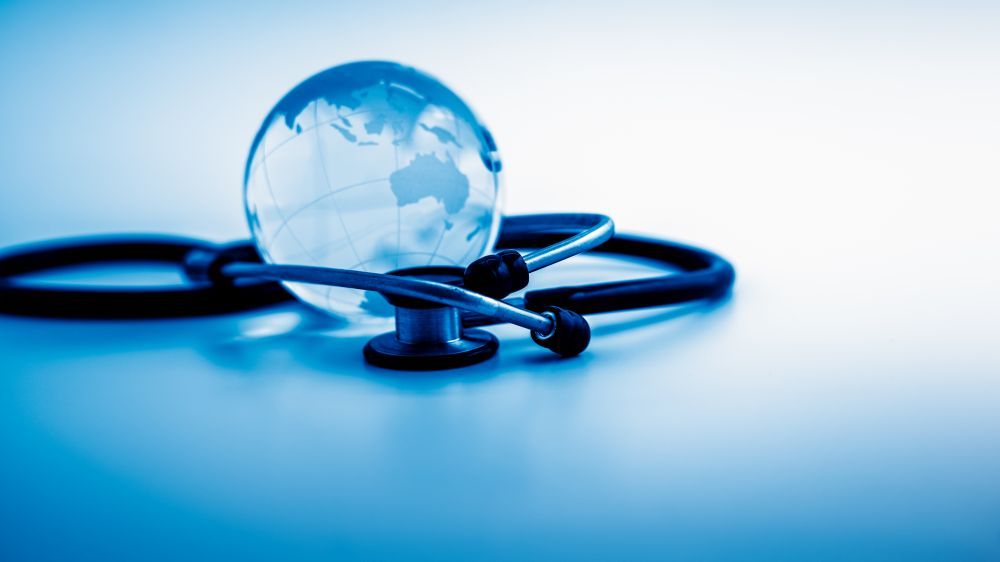
WHO was also on the ground whenever disasters struck. And 2023 had its share of those: earthquakes in Afghanistan, Nepal, Syria and Türkiye; devastating floods in Libya, Pakistan and South Sudan; heatwaves, wildfires, drought and more. Deploying emergency medical teams, sending emergency medical aid and helping countries cope with the mid- and long-term health impacts of these: this is some of what WHO did.
As the IASC designated Cluster Lead Agency for Health, WHO coordinated the health assistance provided by 900 partners to meet the needs of 107 million crisis-affected people in 29 countries.
Every day, somewhere in the world, a WHO team heads out to investigate an outbreak alongside Ministry of Health experts and health workers from local communities, where health outbreaks are first detected and are first brought under control. This year saw a record-breaking resurgence of many infectious diseases – anthrax, chikungunya, cholera, Crimean-Congo hemorrhagic fever, dengue, diphtheria, influenza, RSV – that needed a coordinated regional and global response. Other outbreaks included Lassa Fever in Nigeria and Ebola disease in Uganda, as well as Marburg virus disease in Equatorial Guinea and the United Republic of Tanzania. WHO supported transportation of samples, laboratory testing in countries both centrally and locally, and the establishment of national genomic sequencing capacities. WHO also helped governments investigate cases, trace contacts of patients, set up field hospitals and more to contain the outbreaks and save lives.
Health care has also been under attack. This year alone, WHO documented over 1200 attacks on health care, affecting workers, patients, hospitals, clinics, and ambulances, across 19 countries and territories, resulting in over 700 deaths and nearly 1200 injuries.
Amidst all the crises, there has also been positive news this year. In May, following the convening of the relevant Emergency Committees, WHO’s Director-General declared an end to two Public Health Emergencies of International Concern: COVID-19 and mpox, while also stating that the threats from both are not over.
WHO’s Health Emergency Preparedness, Response and Resilience Framework (HEPR) being developed with Member States and partners details the governance, financing, systems, tools and workforce needs to protect the world from health emergencies. It identifies an all-hazards approach to building key capabilities across the emergency cycle and using a One Health approach. These capabilities include collaborative surveillance, community protection, safe and scalable clinical care, access to countermeasures and emergency coordination, underpinned by a skilled and deployable workforce as well as well-managed, coordinated and inclusive critical research and innovation.
WHO’s Emergency Response Framework has been revised using the learnings of recent health emergency responses and WHO continues to support the assessment, strengthening and regular testing of national and regional preparedness, including with initiatives like the Global Health Emergency Corps (GHEC), the Public Health Emergency Operations Network (EOC-NET), the WHO Global Logistics Hub in Dubai, the Pandemic Fund, the Universal Health Preparedness Reviews (UHPR) and the interim medical countermeasures coordination mechanism (i-MCM-Net).
With its regional offices and hubs, the Public Health Intelligence and Analytics Units in Geneva, a long-standing office in Lyon for laboratory surveillance, and a new Hub in Berlin to help innovate in collaborative surveillance, WHO has been strengthening global collaboration for faster and better intelligence on health emergency threats to inform better decision-making and drive health operations.
With a continued threat of COVID-19, and the looming threat of an influenza pandemic, WHO continues to expand its networks to track respiratory pathogens with pandemic potential, utilizing its Global Influenza Surveillance and Response System and CoViNet to monitor the evolution of these pathogens, conduct risk assessments, and prepare for a potential vaccine when the need arises.
Through all of its work, WHO is committed to leverage the gains made during the COVID-19 pandemic to support Member States in facing and successfully managing current and future threats.
link






